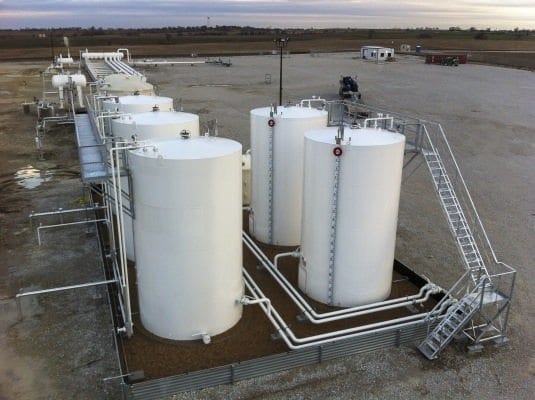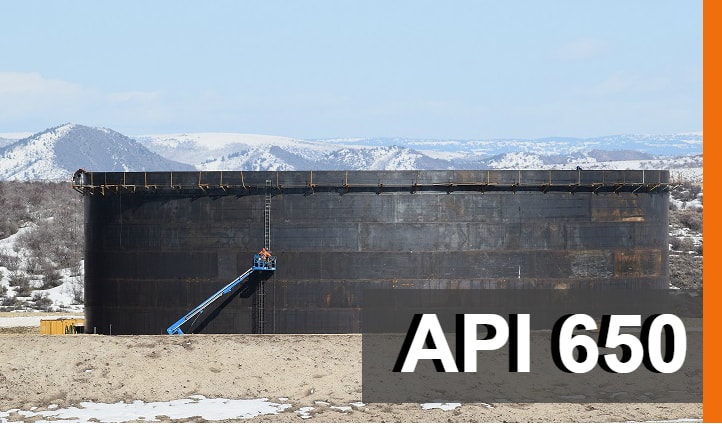Understanding the Codes That Govern API 650 Welding Inspection
Wiki Article
A Detailed Appearance at the Installation Refine of Welding Inspection Techniques
Welding assessment is an essential procedure that guarantees structural integrity and security. The installment of evaluation methods includes a number of systematic actions, each indispensable to accomplishing trustworthy results. From planning and device selection to carrying out visual and non-destructive tests, each stage needs cautious focus. Recognizing these procedures can substantially boost quality control in welding projects. What challenges emerge in executing these methods, and how can they be efficiently dealt with?Understanding the Value of Welding Examination
Welding evaluation is an important element of making certain architectural integrity and safety and security in building and production processes. This practice includes reviewing welded joints for issues, making certain that they meet specific criteria and laws. By systematically assessing weld top quality, inspectors can determine issues such as cracks, gaps, and insufficient blend, which can endanger the stamina and durability of frameworks.The importance of welding inspection prolongs past immediate security issues; it assists avoid pricey failings and potential hazards in the lengthy term. Efficient assessment methods foster compliance with industry standards, thus improving the general dependability of welded components. Additionally, a durable assessment process contributes to maintaining the reputation of builders and producers, as it guarantees clients of the high quality of their jobs. Inevitably, recognizing the importance of welding inspection is essential for promoting risk-free building methods and making sure the long life of important framework and products.
Choosing the Right Tools for Evaluation
When choosing the appropriate devices for evaluation, it is vital to contemplate the certain requirements of the welding procedure and the materials included. Various assessment techniques, such as visual, ultrasonic, and radiographic screening, demand distinct tools tailored to their unique needs. For aesthetic evaluations, tools like multiplying calipers and glasses are essential for reviewing weld high quality. Ultrasonic testing calls for specific devices qualified of sending and obtaining acoustic waves to detect inner imperfections. Radiographic testing, on the other hand, uses X-ray or gamma-ray resources along with sensitive film or digital detectors to expose inconsistencies.
Additionally, individual safety equipment (PPE) is necessary to assure the safety and security of inspectors during assessments. Choosing the right devices not only enhances the accuracy of examinations but additionally adds to the total honesty and safety of the welding task. As a result, an extensive understanding of available devices and their applications is crucial for efficient welding examination.
Planning for the Evaluation Process
Prior to launching the inspection procedure, it is important to establish a complete plan that details the extent and goals of the analysis. This plan needs to include particular criteria that define what constitutes appropriate high quality in the welding job being examined. Recognizing the appropriate codes and requirements is important, as they will certainly assist the inspection standards and methodologies.Furthermore, employees associated with the assessment needs to be appropriately trained and certified in welding assessment strategies to assure integrity and precision. A checklist can be advantageous in arranging the various facets of the inspection, varying from equipment readiness to environmental problems that could impact the evaluation.

Finally, logistical factors to consider such as organizing, readily available sources, and communication between team participants need to be dealt with. By preparing systematically, assessors can boost the efficiency of the evaluation and make certain that all crucial elements are appropriately thought about prior to proceeding with the assessment itself.
Carrying Out Aesthetic Inspections

Carrying out visual assessments is an essential step in the welding examination process, calling for mindful preparation to guarantee effective evaluation. Inspectors need to know with crucial problem signs that can indicate prospective concerns in weld quality. By concentrating on these elements, one can enhance the overall dependability of the examination results.
Preparing for Visual Evaluation
Visual evaluation functions as an important initial step in the welding evaluation procedure, guaranteeing that any prospective defects are identified early (API 650 Welding Inspection). Proper prep work is important for efficient aesthetic evaluation. Inspectors should begin by examining relevant documents, including welding procedures and requirements, to understand the task demands. They need to gather necessary devices, such as magnifying glasses, flashlights, and ideal individual protective tools (PPE) A comprehensive examination of the examination location is important; inspectors must confirm it is clean and cost-free of blockages. Furthermore, it is necessary to develop ideal lights problems to enhance exposure of welds. By taking these preparatory steps, inspectors can create an atmosphere for determining disparities and guaranteeing the honesty of the welded frameworksTrick Problem Indicators
A complete understanding of vital defect indications is crucial during aesthetic inspections to ensure the quality and safety and security of bonded joints. Inspectors ought to focus on certain indications such as fractures, porosity, undercuts, and insufficient blend. Splits may look like sharp lines and can endanger architectural integrity. Porosity materializes as tiny holes that can deteriorate weld stamina. Undercuts, which are grooves along the weld side, can cause anxiety concentration. Insufficient fusion shows that the weld steel did not correctly bond with the base material, resulting in a weak joint. By systematically identifying these defects, inspectors can ascertain compliance with industry criteria and boost the general dependability of welded frameworks, eventually contributing to more secure operational problems.Applying Non-Destructive Examining Techniques

Many non-destructive screening (NDT) strategies are important to guaranteeing the honesty of bonded structures without endangering their capability. These approaches allow examiners to review weld top quality and find defects without causing damages to the products being checked. Typical NDT techniques consist of ultrasonic testing, radiographic testing, magnetic fragment testing, and color penetrant screening. Each method offers a certain purpose, addressing different types of imperfections such as fractures, porosity, or incomplete blend.
Carrying out NDT techniques requires an organized technique, starting with picking the proper method based upon the materials and the nature of the weld. Educating workers in these strategies is necessary for accurate results. Additionally, developing clear treatments and criteria guarantees uniformity throughout the inspection process. By incorporating NDT right into the welding inspection operations, organizations can improve the reliability of their products while lessening potential threats related to structural failings. This aggressive approach inevitably adds to preserving safety and security and top quality standards in welded buildings.
Evaluating and recording Evaluation Outcomes
Efficient paperwork and analysis of evaluation outcomes are important parts of the welding assessment process. Precise documents of assessment findings serve as a recommendation for quality control and compliance with market requirements. API 650 Welding Inspection. Assessors must make use of structured types or this link digital platforms to log information such as the kind of weld, inspection techniques employed, and any kind of discrepancies determined throughout the assessmentWhen data is gathered, thorough evaluation is important. This involves comparing results versus developed criteria to recognize patterns or persisting problems. Statistical tools may be employed to evaluate flaws and evaluate their effect on total weld quality.
Furthermore, efficient communication of findings to appropriate stakeholders is essential. Summaries and records should be concise and clear, highlighting essential understandings and suggestions for rehabilitative activities. By systematically recording and examining examination outcomes, organizations can foster continuous enhancement in welding practices and enhance item stability.
Frequently Asked Questions
What Certifications Are Required to Come To Be a Welding Examiner?
To come to be a welding inspector, one usually requires appropriate certifications such as AWS CWI, in addition to experience in welding practices, understanding of welding codes, and proficiency in assessment methods to ensure high quality and safety requirements.Just How Usually Should Welding Inspections Be Performed?
Welding examinations must be performed on a regular basis, usually after each have a peek at this site weld is completed, and periodically during tasks. Elements such as project complexity, market standards, and governing requirements can influence the frequency of these inspections.What Is the Price of Welding Evaluation Providers?
The price of welding assessment services varies considerably based on factors such as project size, location, and intricacy. Usually, rates range from $100 to $150 per hour, with additional charges for specialized click resources testing and qualifications.Are There Certifications for Welding Inspectors?
Yes, there are various qualifications for welding inspectors, including those provided by the American Welding Culture (AWS) and the International Institute of Welding (IIW) These certifications ensure inspectors have the needed abilities and understanding for reliable analyses.
How Do I Choose an Assessment Company?
To select an evaluation solution copyright, one need to examine qualifications, experience, industry reputation, and client evaluations. Additionally, comparing solution offerings and rates can help guarantee the picked provider meets details task requires effectively.In addition, workers entailed in the assessment has to be effectively trained and licensed in welding evaluation strategies to guarantee integrity and precision. Conducting visual inspections is a crucial action in the welding examination process, requiring cautious prep work to assure effective assessment. Aesthetic examination serves as a vital very first action in the welding inspection process, assuring that any potential defects are identified early. Efficient documentation and evaluation of inspection results are vital elements of the welding inspection process. Welding evaluations should be carried out consistently, normally after each weld is completed, and periodically during projects.
Report this wiki page